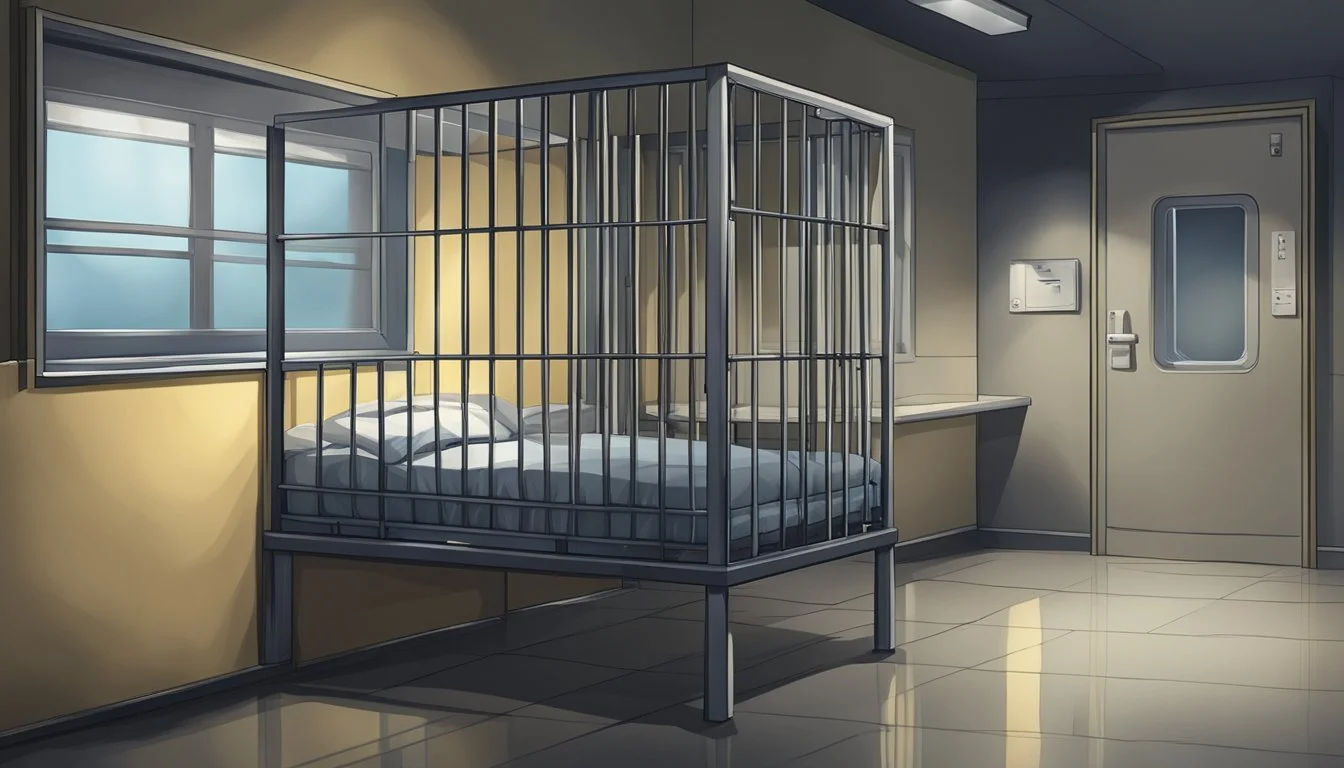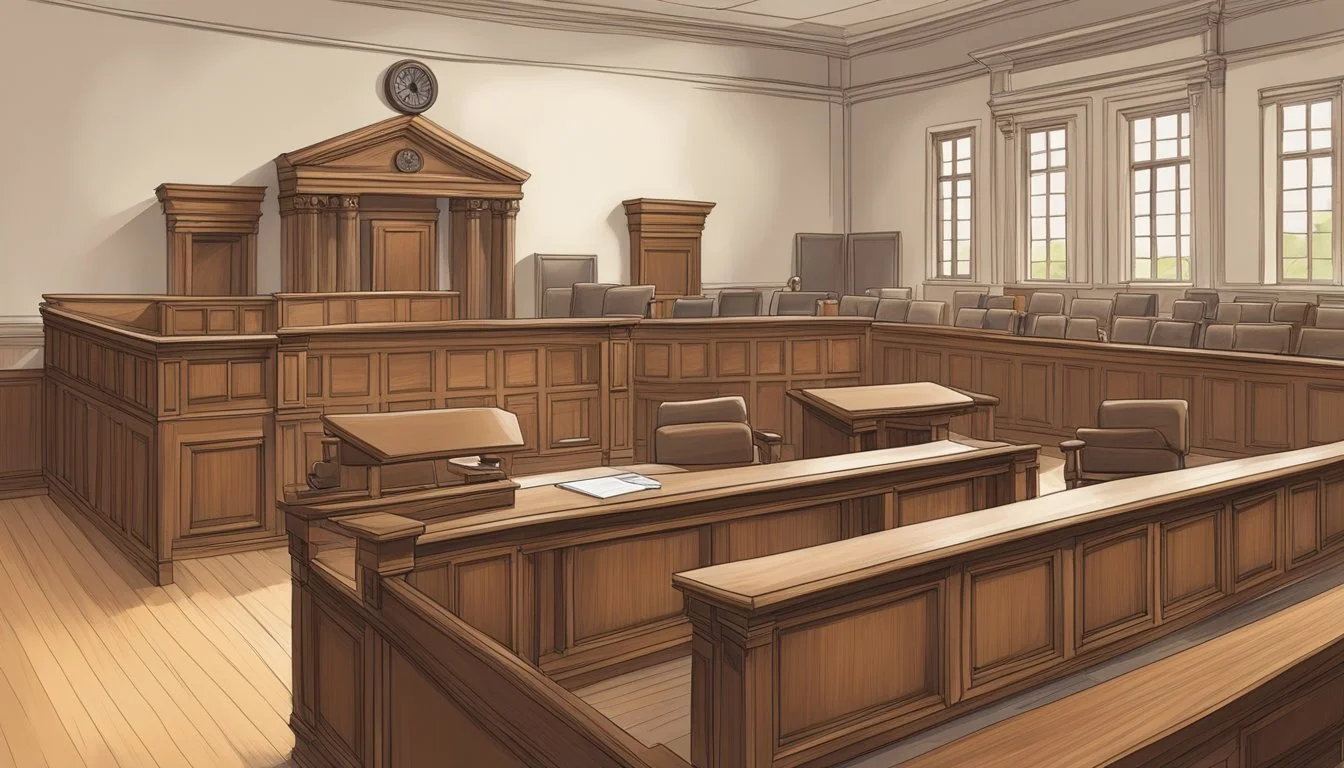Richard Biegenwald's Thrill Kill Termination: Death by Natural Causes
Serial Killer's Reign Ends Quietly in Prison
Richard Biegenwald, known as the "Thrill Killer," terrorized the Jersey Shore in the late 20th century. His reign of terror came to an end not through execution, but through natural causes. Richard Biegenwald, convicted of murdering at least five people, died on March 10, 2008, at the age of 67 due to respiratory and kidney failure.
Biegenwald's criminal career spanned decades, beginning in the 1950s and continuing until his final arrest in the 1980s. He targeted young women and drug dealers in Monmouth County, New Jersey, earning his chilling moniker for the seemingly random nature of his killings. His victims included William Ward, a drug dealer whom Biegenwald shot multiple times in the head in September 1982.
The story of Richard Biegenwald serves as a stark reminder of the impact of violent crime on communities. His death in prison, while serving multiple life sentences, marked the end of a dark chapter in New Jersey's criminal history. The case continues to fascinate and horrify true crime enthusiasts, shedding light on the complexities of criminal psychology and the lasting effects of childhood trauma on adult behavior.
Early Life and Troubled Childhood
Richard Biegenwald's early years were marked by adversity and dysfunction. His experiences as a child set the stage for his later criminal behavior.
Disturbed Children
Richard Biegenwald was born on August 24, 1940, in Staten Island, New York. He grew up in a household plagued by violence and neglect. His father's alcoholism and abusive behavior created a toxic environment.
At a young age, Biegenwald exhibited signs of psychological disturbance. He struggled to form healthy relationships with peers and displayed aggressive tendencies.
Experts later identified these early behaviors as precursors to his adult criminal activities.
Drinking Problem
Biegenwald's father's alcoholism significantly impacted the family dynamic. The constant presence of alcohol in the home normalized substance abuse for young Richard.
By his teenage years, Biegenwald had developed his own drinking problem. This early exposure to alcohol contributed to his later struggles with addiction and impulsive behavior.
The cycle of substance abuse within the family perpetuated a pattern of dysfunction and instability.
Juvenile Delinquency
As Biegenwald entered adolescence, his troubled behavior escalated. He began engaging in petty crimes and acts of vandalism in Bayonne, New Jersey, where his family had relocated.
At age five, Biegenwald set fire to a neighbor's shed. This incident marked the beginning of his criminal activities.
By age eight, he had been arrested for stealing. His juvenile record grew as he committed increasingly serious offenses.
Biegenwald's early encounters with law enforcement foreshadowed his future as a career criminal and eventually, a serial killer.
Initial Crimes and Incarceration
Richard Biegenwald's criminal career began in his youth and escalated to serious offenses by his late teens. His early crimes led to his first major conviction and subsequent parole, setting the stage for his later notoriety.
Robbery and Arson
At age 18, Biegenwald committed his first significant crime. In December 1958, he robbed a grocery store in Bayonne, New Jersey. During the robbery, he shot and killed the store owner. This act marked the beginning of Biegenwald's violent criminal behavior.
Shortly after the robbery, Biegenwald was arrested for arson. He had set fire to a car dealership in Bayonne. These two crimes demonstrated his propensity for both violence and property destruction.
First Conviction
Biegenwald faced trial for the grocery store murder in 1959. The court found him guilty of first-degree murder. Due to his age and mental state, he avoided the death penalty.
Instead, the judge sentenced Biegenwald to life in prison. He began serving his sentence at New Jersey State Prison in Trenton. During his incarceration, Biegenwald underwent psychiatric evaluations and treatment.
Subsequent Parole
After serving 17 years, Biegenwald gained parole in 1975. His release was conditional on good behavior and regular check-ins with a parole officer.
Initially, Biegenwald appeared to comply with parole requirements. He found odd jobs and maintained a low profile. However, he soon began violating parole conditions.
By 1977, Biegenwald was wanted for failing to report to his parole officer. He also became a suspect in a rape case. These violations and new criminal allegations foreshadowed his return to violent crime in the coming years.
The Killing Spree
Richard Biegenwald's murder spree terrorized the Jersey Shore from 1958 to 1983. He targeted young women and left a trail of bodies in shallow graves across Monmouth County.
Victimology
Biegenwald primarily victimized young women. His known victims included 18-year-old Anna Olesiewicz, who was found shot in the head on the Asbury Park boardwalk in 1982.
He also murdered 17-year-old Maria Ciallella and 17-year-old Deborah Osborne. Their bodies were discovered in shallow graves in Ocean Township.
Two male victims were also attributed to Biegenwald: William Ward, age 56, and Stephen Szmytkowski, age 32.
Methodology
Biegenwald's methods were brutal and calculated. He often used a .22 caliber handgun to shoot his victims.
After murdering his victims, Biegenwald would frequently dismember the bodies. He buried some in shallow graves to conceal the evidence.
His crimes earned him the moniker "Thrill Killer" due to the seemingly random nature of his victim selection and the lack of clear motive beyond the act of killing itself.
Asbury Park Boardwalk Murders
The Asbury Park boardwalk became a hunting ground for Biegenwald. In August 1982, he lured Anna Olesiewicz away from her friends on the boardwalk.
Her body was found the next day behind a restaurant in Ocean Township. She had been shot in the head.
This murder brought intense media attention to the case and put pressure on law enforcement to catch the killer. It marked a turning point in the investigation that would eventually lead to Biegenwald's capture.
Apprehension and Legal Proceedings
Richard Biegenwald's reign of terror ended with his arrest in 1983. His capture led to a complex legal process involving multiple trials and appeals.
Capture and Evidence
Police arrested Biegenwald on January 22, 1983, after surrounding his home in Asbury Park, New Jersey. A search of the property uncovered crucial evidence linking him to several murders. Investigators found personal items belonging to victims and a .22 caliber pistol used in some of the killings.
Biegenwald's roommate, Dherran Fitzgerald, provided key testimony. He led police to the buried remains of a victim in Staten Island. This discovery strengthened the case against Biegenwald and helped authorities solve multiple cold cases.
Trial and Sentencing
Biegenwald faced trial for the murder of Anna Olesiewicz in 1983. The prosecution presented a strong case, including physical evidence and witness testimony. On December 7, 1983, the jury found Biegenwald guilty of first-degree murder.
During the penalty phase, the jury recommended the death sentence. The judge formally sentenced Biegenwald to death on December 8, 1983. This verdict marked a significant moment in New Jersey's criminal justice system.
Death Sentence
Biegenwald's death sentence sparked legal debates and appeals. In 1987, the New Jersey Supreme Court overturned his original death sentence due to jury instruction issues. A new penalty phase trial in 1989 again resulted in a death sentence.
The case became a focal point in discussions about capital punishment. Biegenwald's lawyers argued against the constitutionality of New Jersey's death penalty statute. Despite these efforts, courts upheld his conviction and death sentence in subsequent appeals.
Biegenwald remained on death row for years as legal challenges continued. However, he died of natural causes in 2008 before the sentence could be carried out.
Biegenwald's Victim Profile
Richard Biegenwald targeted primarily young women in their late teens and early twenties. His victims were often vulnerable individuals he encountered in Monmouth County, New Jersey.
Targeting of Young Women
Biegenwald's first known victim was Anna Olesiewicz, an 18-year-old he murdered in 1981. He lured her into his car in Asbury Park before killing her. His subsequent victims followed a similar pattern - young women in public places.
Biegenwald frequently targeted sex workers and hitchhikers. These victims were often isolated and less likely to be immediately reported missing. He exploited their vulnerability to carry out his crimes.
The serial killer's preference for young female victims aligned with common patterns seen in other sexually-motivated murderers. However, Biegenwald also killed two men during his spree.
Psychological Analysis
Experts classified Biegenwald as a "thrill killer" who derived pleasure from the act of murder itself. His crimes were not primarily sexually motivated, but driven by a desire for power and control.
Biegenwald's troubled childhood and history of arson point to deep-seated psychological issues. His early criminal behavior escalated to murder, suggesting a progressive pattern of violence.
The killer's method of dismembering and burying victims together indicates a level of organization and planning. This behavior is often associated with psychopathic tendencies and a lack of empathy for victims.
Biegenwald's ability to blend into society between killings is typical of organized serial killers. He maintained relationships and employment while concealing his crimes.
Imprisonment and Death
Richard Biegenwald spent decades behind bars after his conviction for multiple murders. He served his sentence at New Jersey State Prison in Trenton.
Despite being sentenced to death, Biegenwald avoided execution through legal appeals. New Jersey abolished the death penalty in 2007, further ensuring he would not face capital punishment.
On March 10, 2008, Biegenwald died at St. Francis Medical Center in Trenton. He was 67 years old at the time of his passing.
The cause of Biegenwald's death was reported as natural causes. Specifically, he succumbed to respiratory and kidney failure.
His death marked the end of a life marked by violence and incarceration. Biegenwald's passing closed a dark chapter in New Jersey's criminal history.
Biegenwald in Popular Media
Richard Biegenwald's crimes have been featured in various true crime works and documentaries, capturing public interest in the "Thrill Killer" case.
True Crime Literature
Several books have explored Biegenwald's criminal history. "Jersey Shore Thrill Killer: The Richard Biegenwald Murders" by John E. O'Rourke provides a detailed account of his crimes. The book examines Biegenwald's troubled past and the investigations that led to his capture.
"Garden State Gangland: The Rise of the Mob in New Jersey" by Scott M. Deitche includes a section on Biegenwald, placing his crimes within the broader context of New Jersey's criminal history.
Documentaries and Coverage
Television has also covered Biegenwald's case. The Investigation Discovery channel featured his story in an episode of "Evil Lives Here." This program explored the perspectives of those close to Biegenwald.
Local news outlets in New Jersey produced special reports on the case. These segments often included interviews with law enforcement officials and victims' families.
The A&E network's "American Justice" series dedicated an episode to Biegenwald, examining the legal proceedings and the impact of his crimes on the community.
Impact on the Legal System
Richard Biegenwald's case prompted significant reevaluation of parole practices and reignited debates surrounding capital punishment. These discussions led to changes in how violent offenders were monitored and sentenced.
Parole System Reevaluation
Biegenwald's crimes exposed flaws in the parole system. He committed multiple murders after being released on parole for a previous homicide. This revelation sparked public outrage and led to stricter parole guidelines for violent offenders.
New Jersey lawmakers implemented reforms to enhance monitoring of parolees with violent histories. These changes included:
More frequent check-ins with parole officers
Mandatory counseling sessions
Stricter conditions for release
The case highlighted the importance of thorough risk assessments before granting parole to violent criminals. It also emphasized the need for improved communication between law enforcement agencies and parole boards.
Death Penalty Debates
Biegenwald's case became a focal point in discussions about capital punishment. His initial death sentence was overturned, leading to a new sentencing trial. This process drew attention to the complexities and costs associated with death penalty cases.
Advocates for capital punishment argued that Biegenwald's crimes warranted the ultimate punishment. They cited the brutality of his acts and his repeated offenses as justification for execution.
Opponents pointed to the lengthy appeals process and the possibility of wrongful convictions. They questioned the effectiveness of the death penalty as a deterrent to violent crime.
The case influenced public opinion on capital punishment in New Jersey. It contributed to ongoing debates about the morality and practicality of state-sanctioned executions.
Legacy and Aftermath
Richard Biegenwald's crimes left a lasting impact on criminal investigations and victim support. His case highlighted the need for improved profiling techniques and support systems for those affected by violent crimes.
Influence on Criminal Profiling
Biegenwald's case contributed to advancements in criminal profiling. Law enforcement agencies studied his patterns of behavior to better understand the psychology of serial killers. This analysis led to refined investigative techniques and improved methods for identifying potential suspects in similar cases.
The FBI's Behavioral Analysis Unit incorporated lessons from Biegenwald's crimes into their training programs. These insights helped investigators develop more accurate profiles of serial offenders, enhancing their ability to solve complex cases.
Support for Victims' Families
Biegenwald's crimes sparked increased awareness of the need for support systems for victims' families. Several organizations emerged to provide counseling and assistance to those affected by violent crimes in the Jersey Shore area.
The Victims of Crime Compensation Office in New Jersey expanded its services in response to cases like Biegenwald's. This office now offers financial assistance, counseling, and legal support to families of murder victims.
Community-led support groups formed to help families cope with loss and navigate the legal system. These groups continue to advocate for victims' rights and push for stronger legislation to protect potential targets of violent crimes.









